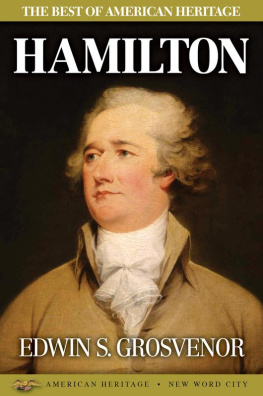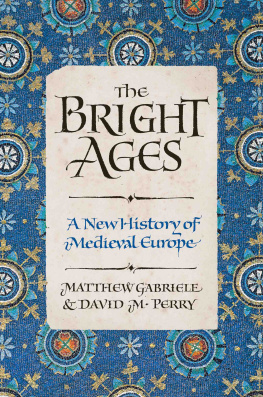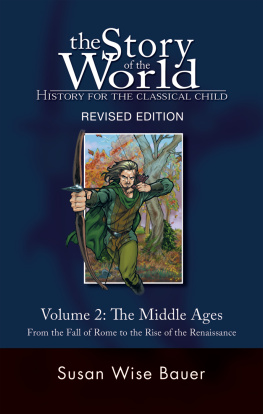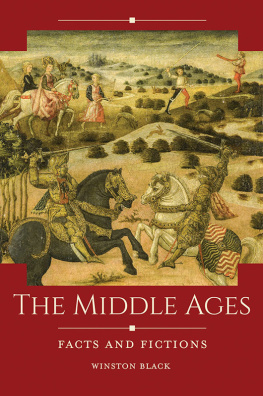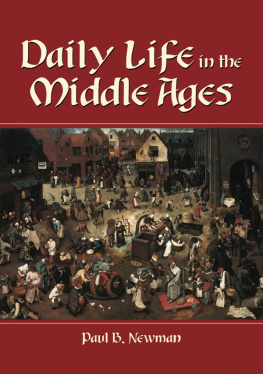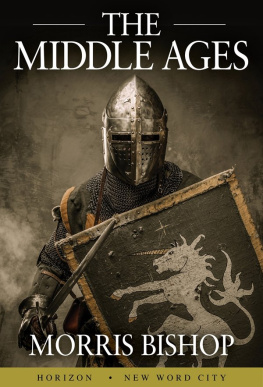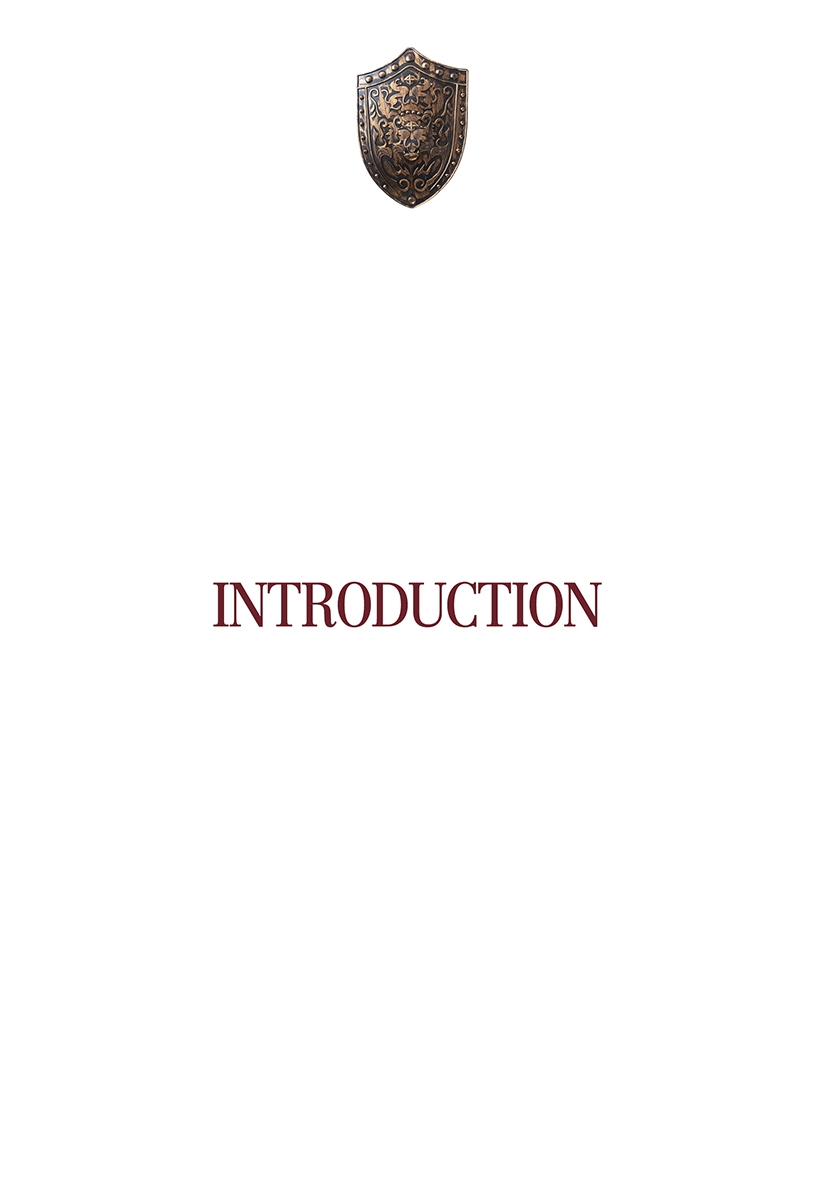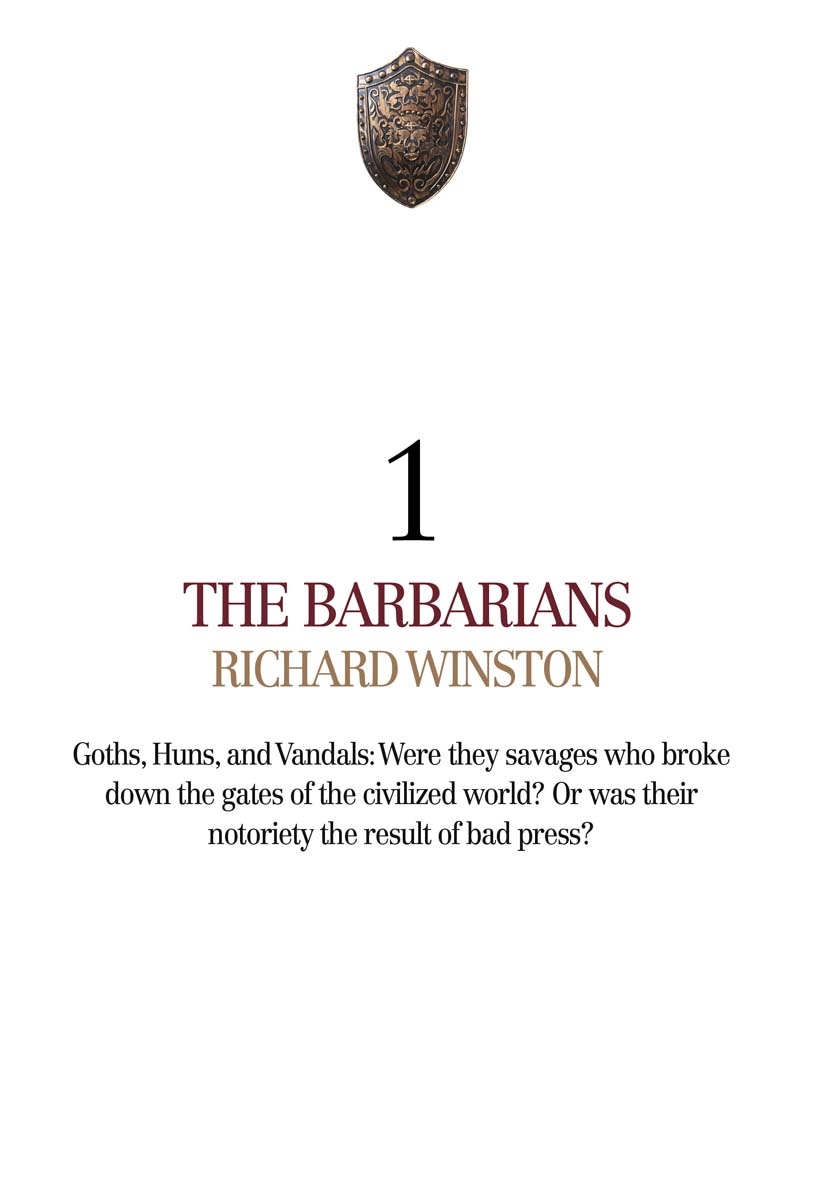It was during the Renaissance, which began in the fourteenth century, that the Middle Ages came to be thought of as the Dark Ages. It was a slander that would continue for the next five centuries. Inspired by the rediscovery of Greek and Roman writing on literature, philosophy, and science, the Italian scholar Petrarch divided history into three periods: the Classical, Middle, and contemporary eras. The Middle period referred to the millennium after the fall of Rome, and to Petrarch it was a time of ignorance and Tenebrae, or darkness. Other writers followed Petrarchs categorization, and the stain remained for the next 500 years. Finally, thankfully, reason returned, and historians have come to see the Middle Ages as a transition period from Late Antiquity to the Renaissance a period of perpetuation, not destruction, of Roman culture. There were, of course, years of relative darkness, of rampant disease and warfare, but there were also interludes of radiant accomplishment.
Many of the modern historians who helped to reevaluate the Middle Ages wrote for Horizon, the extraordinary hardcover magazine published from 1958 to 1978. The essays from Horizon that are collected in this volume show that the Middle Ages were a time of struggle and triumph, folly and ambition, compassion and cruelty. For better and for worse, the events of the Middle Ages helped create the world we inhabit today. These pieces also make clear the interconnected nature of world events. Even in the Middle Ages, when modern technology didnt exist, ideas traveled far and wide. Knowledge could not be contained. Unfortunately, neither could disease or other atrocities.
We set the stage in the opening chapter with a piece by Richard Winston about the Barbarians, who helped usher in the Middle Ages and the fall of Rome. The invasions could be brutal, but Winston also notes that the newcomers quickly adopted Roman customs. It was less about destruction than about control.
The history of the Middle Ages is one of overlapping events and struggles that lasted for centuries. A strict chronology doesnt give the necessary texture to the complexity of the times. So, these essays move back and forth across the sweep of the Middle Ages. There is a profile of the world of Charlemagne, who united much of Europe under his rule during the early ninth century. Thats followed by an overview of Europe in the year 1000, an era once seen as the darkest of the Dark Ages, but perhaps also when the promise of dawn was being glimpsed.
Next is an exploration of Islamic rule in Spain during the Middle Ages, followed by a recounting of the Norman Conquest, a military invasion that in many ways helped create the United Kingdom as we know it.
From there, our story moves east, to the history of Byzantium, the empire created in the shadow of Romes fall. Once discounted as merely a spectacle of excess, Byzantium is now credited with having preserved much of what we now consider to be western culture. Then come two chapters about separate aspects of the Crusades. First, the highly personal war between Richard and Saladin for control of the Holy Land. Second, the rise of the Knights Templar, who embarked on a campaign of liberation in the Mideast only to run into a political firestorm at home in France. Following that is a profile of Alfonso, ruler of Spain after the fall of Islam there. He was a modern, nearly secular ruler, a compromiser and lover of the arts and science. Perhaps, not surprisingly, his reign was short-lived and disastrous.
Following Alfonso, we turn to the Troubadours, the songwriters and balladeers of the Middle Ages. More than mere entertainers, they also were satirists and broadcasters of an earlier era. Finally, we revisit the Black Death, the plague that ravaged Europe, killing a third of its citizens and having an impact on the continent for centuries.
What these pieces depict is an age that is neither dark nor the middle. Rather, what is clear is that it was part of the continuum of history, relentlessly pushing forward. The results can be unpredictable, not always pretty and not always displaying the full range of humanity. What the Middle Ages do reveal is that ambition and greed, optimism and hope, the love of literature and learning, and the desire for civilized society are not modern constructs. They are the building blocks of history and our collective lives.
Goths, Huns, and Vandals: Were they savages who broke down the gates of the civilized world? Or was their notoriety the result of bad press?
Barbarians. The word conjures visions of hordes of Germanic warriors ravaging the once flourishing cities of Gaul, Italy, and Spain, ushering in the Dark Ages. Then, so the story goes, the softening influence of Christianity shepherded these philistines to the milder habits of civilization, and then out of that jumble emerged medieval society.
The scenario fits into our preconceptions about sin, punishment, grace, and redemption, but its a false doctrine. Yes, the barbarians helped bring about the fall of Rome, but the neat divisions of before and after belie a richer understanding of the barbarians and their own quest for what Rome had: the power to control its destiny.
Barbarians were not a race or ethnic group. They were more or less a political definition, signifying people who were not citizens of the Roman Empire. In that sense, they could be from anywhere on the map. Emerging from the central plains of Asia, the Huns encroached almost to Paris and deep into Italy. From Denmark, Germany, and Holland, the Angles, Saxons, and Jutes crossed the North Sea and took possession of England. The Eastern Germanic Burgundians seized the territory around Geneva as the Franks made their way into northern Gaul and remained there, giving the country of France its name. Suevians and Vandals moved farther south into Spain, where the Suevians were assimilated into the population and the Vandals moved on to North Africa. Ostrogoths and Visigoths marched from Scandinavia to Italy (the Visigoths continued on to Spain); the Alans, nomads from Persia, traveled to the Strait of Gibraltar, and the Lombards crossed Germany into what is now Hungary and then moved into the part of Italy that today is known as Lombardy.
While certain groups of so-called savages did move into the Roman Empire between the fourth and sixth centuries, there werent as many as earlier historians had suspected - no more than 80,000 Vandals, for example, crossed the Strait of Gibraltar into Africa, and fewer than half were warriors. Nevertheless, these intruders successfully established political factions within the empire - until the empire splintered.
With the exception of the Alans, Avars, Bulgars, Huns, and Magyars, the barbarians were of various Germanic groups, unaware of their shared language, race, and mutual culture.
The word German, according to the first-century Roman historian Tacitus, was in his time comparatively new and had been extended from the name of a tribe to the whole people. Despite his many deficiencies, Tacitus remains one of the principal sources for our notions about the Germans of the pre-invasion period. In his historical account of the Germans, he describes them as a distinct, unmixed race of men with fierce blue eyes, light hair, and huge frames fit only for sudden exertion.
Even though the Germans had entered into the Iron Age, Tacitus said, few used iron to forge swords or long lances - their primary weapon was a spear with a short, narrow head. They wore no armor, and only a few had metal or leather helmets. Their painted shields alone served them for defense. For the most part, the Germans obtained their weapons from the Romans through trade or by victory in battle; archaeological finds throughout Denmark, Germany, and the Baltic countries testify that the barbarians imported vast quantities of Roman arms.


